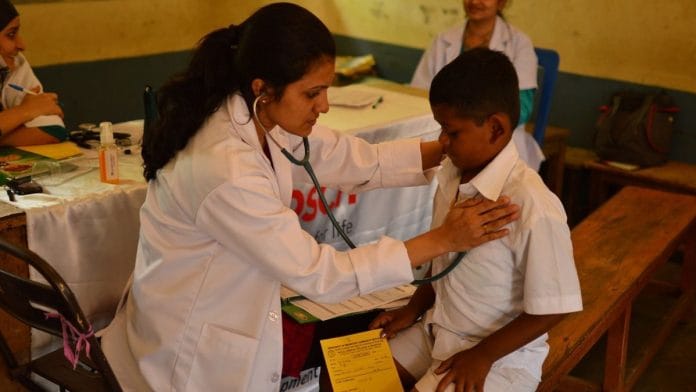Thank you dear subscribers, we are overwhelmed with your response.
Your Turn is a unique section from ThePrint featuring points of view from its subscribers. If you are a subscriber, have a point of view, please send it to us. If not, do subscribe here: https://theprint.in/subscribe/
Highlighting the Issue
Dr. Kiran, a junior doctor of Internal Medicine, stands at the foot of the patient. His mind, a warbled mess of what the patient’s diagnosis was, what resuscitative measures he undertook and what was left to be done to the patient who was admitted the night before. Sleep creeps upon his mind and if he closed his eyes, he would pass out in a jiffy.
“What tests have you done for this patient? Don’t you know the patient has to undergo all the investigations before rounds?”, the Professor of Internal Medicine asked the Medical Resident. Only to be met with a confused stare. Nothing prepared the Resident who secured 3rd rank in the entrance exam amongst a thousand candidates, and after having worked 72 hours in the past 4 days, to face the demands of a stretched workforce.
“You have been on duty for 24 hours, you have been seeing all the patients continuously. These patients are your responsibility. You are supposed to have taken the patient’s history, examined the patient, spoken to the patient’s relatives and developed a treatment plan for the patient. How can you do all this without having figured out what condition the patient is in?”
“Sir, I didn’t have time. The Emergency was busy with patients through the night, and I had to continuously attend to them” Dr. Kiran answered, his voice nervous, his forehead, a bead of sweat.
“This is a private hospital! There aren’t too many patients! During our time 20 years ago, we manage an entire department. There were no seniors to report to and we had to work 48 hour shifts! Don’t give petty excuses! You are lucky you have seniors here to guide you!” The Internal Medical Professor bellowed at him, further frightening him. Dr. Kiran went stiff at his shouting.
“You’ve done a CT scan, run the electrolytes and are also awaiting the results of a complete blood count, isn’t it? To rule out signs of an infection?” A consultant in the same department who was aware of the case, pitched in.
“Yes, yes, I have. And we are awaiting the consent from the family for an ICU admission.” Dr. Kiran recollected and let the Team know.
“When will you learn? How long must we keep guiding you like this?” The Professor chided, before moving on from him to the next patient.
“Don’t worry. I understand how it is. Just improve next time, okay?”, the consultant reassured.
What we have just witnessed here, is a phenomenon that regularly occurs in Medical Institutions across the country and the world. Threats, intimidations, and hollering is commonly encountered in medical colleges, government hospitals and private hospitals, and this occurs especially from a senior medical practitioner to a junior doctor.
It takes close to 10 to 14 years to be an experienced licensed medical practitioner. The long hours of study, combined with the uncertainty of not being able to easily pick a stream that the junior doctor would practice for the rest of their life, places a lot of burden on the doctor once he or she finishes their undergraduate medical school.
Dr. Janelle Luk, in a report by usnew.com mentioned that most med students were in their 20s and 30s, which made it difficult for these students to see their same-aged peers settling down and starting families while they often had anxieties about falling behind on their relationship and family goals. This situation is quite accurate to the Indian scenario where Indian medical students undergo a similar process.
This leads the older generation of doctors to believe that they worked much harder under difficult circumstances as compared to the millennial generation or generation Z. For example Baby boomer Robert Centor, MD, MACP, who first worked as an attending consultant during January 1980, before today’s millennials were born, said that the older generation believed that the youth were overprivileged and not as dedicated. This can be corroborated with any senior doctor working here.
This perception amongst the senior doctors, combined with the stressors they faced during their training is all pervasive, contributing to their irate behaviour against the junior doctors. Medical doctors are also prone to bursts of anger, often with regards to the patient, or to the behaviour or actions of a junior doctor, which may or may not be well founded.
Doctors, nurses, and other Health Care Practitioners often face difficult, frustrating, and stressful conditions. Long working hours and poor work life balance give the doctors little time to reflect, to acknowledge and work on their anger and transform their emotions into healthy communication styles.
And it is this unprocessed anger that the senior doctor offloads to a junior doctor, which then the junior doctor emulates to carry forward to the next generation.
These pieces are being published as they have been received – they have not been edited/fact-checked by ThePrint.


